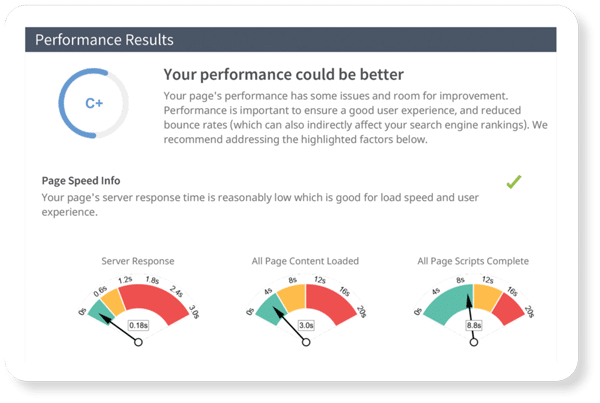It’s nice to have a bounce in your step. It’s fun to bounce a baby on your knee. It’s important to have adequate bounce when you buy a sand wedge.
But for your medical practice website, too much bounce equals too few patients.
Bounce rate. What is it and why does that matter to your practice? How about we spend this second blog of February heading down that road. After all, with spring just around the corner the bounce of the Easter Bunny can’t be all that far away.
What is a bounce?
A bounce is a single-page session on your practice website. This is a Google Analytics measurement where a user opens a single page on your site, but then exits without checking out any other pages.
The “bounce rate” is single-page sessions divided by all sessions, basically the percentage of all sessions on your site where users only visited a single page and then left.
Different bounce rates for different folks
It would be easy to assume a high bounce rate, where the majority of your visitors hit one page and split, would be a bad thing. Not necessarily. Consider a site where visitors only want the time, date, location, and that’s it. They get the latest information and leave. Think of a website with information about free concerts in the city park. High bounce rate.
For an online retailer hoping to sell widgets online, a high bounce rate would be a bad thing. It would show that the site visitors weren’t interested enough to stay, move to other pages, and finish on a cart/purchase page. You would inherently expect an online retailer to have a lower bounce rate unless the site is just dreadful or impossible to navigate. Once a person hits that site, you’d expect them to move about a little bit, looking at different product offerings
For a medical practice, visitors aren’t likely to be reaching the site by accident. They should have been coming from search, from a referral, from a Google My Business listing, or maybe from a directory. These are potential patients and you hope they are on your site for information, such as the procedural details of a tummy tuck if you’re a plastic surgeon or All-on-4 dental implants if you’re a dentist. If your site is well-designed with interesting, informative content, you hope this satisfies the informational needs of the visitor. He or she should stay awhile, possibly bumping over to another page, such as your About Us page to read up on the surgeon or dentist. If nothing else, the visitor should be on that first page for a while engaging with the information. Along that line of thinking, a high bounce rate would be a bad sign for a medical practice.
What makes for a good bounce rate?
Research shows that most websites will see bounce rates fall somewhere between 26 percent and 70 percent. The average bounce rate for websites varies depending on content, objective, and industry, but it is around 45 to 50 percent. So, one in two visitors hits your page and then leaves.
You want your practice site under that average. An excellent bounce rate for your practice would be in the range of 26 to 40 percent. A bounce rate between 41 and 55 percent is average. For medical websites, anything over that 55 percent should be cause for alarm, as over half of your visitors aren’t engaging.
Part of what can impact bounce rate is mobile use. Mobile users, simply by the nature of the beast — they’re on the train, they’re walking, they get a call in the middle of their search — have higher bounce rates. Searching on your phone or tablet is the highest origin of search now, but it is far less stable when it comes to bounce rate than a person on their home computer reading about how a procedure is performed.
High bounce should equal high anxiety
The goal of any website worth its digital salt is how much it engages the visitor. Whether a person stays on your site and moves around can be a factor of how it’s built. For instance, if your nephew the computer whiz built your practice website for you, it may not be mobile-friendly. The font size could be artsy, but somehow not readable. Photos could load at glacial speeds.
Or, if you had your front desk manager write all of the content for your site, it could have grammatical issues. It could be thin on procedural details and descriptions. Sections could be so short as to make the visitor wonder just how much experience the doctor or dentist actually has.
Your site could have few photos, no video or animations of procedures, and other obvious design shortcomings.
All of the above can make it easy for a visitor to your site to bounce off to your competitor.
Pay attention to the bounce
Bounce rate can be a great thing to look at when looking at the performance of your medical practice site. A high bounce rate should make you take a hard look at your site. Think of your typical patient. Are you giving that person the information about your procedures and treatments they are looking for? Is your content well-written and interesting? Or is it generic pablum you “borrowed” from elsewhere (see that nephew mentioned above)? Does your site have photos that show off your practice? Is there video where appropriate? Do you have fully populated before and after galleries, if they’re appropriate for your medical specialty? And is your site mobile friendly, meaning it feels the same as your desktop site, but it functions on a mobile device like it was built for that mobile device.
At MyAdvice, we’ve been designing and building the web’s most beautiful, engaging websites and optimizing them for search for two decades now. We were doing this before SEO was even an acronym. That’s why our sites have lower bounce rates and higher conversion rates. That’s why visitors hit them and stay a while.
Now that you’re a bounce rate expert, maybe it’s time we lowered the bounciness of your medical website. Give us a call or fill out a contact form and let’s get to it.


